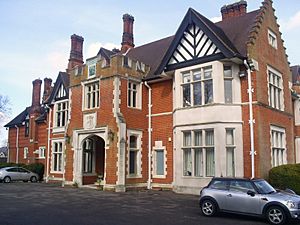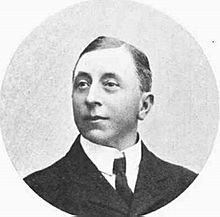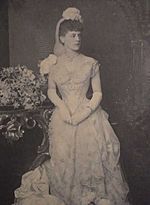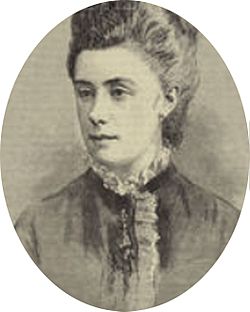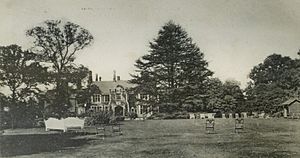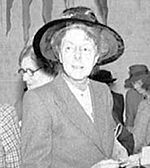Chorleywood House Estate facts for kids
Chorleywood House Estate is a large natural area, about 64 hectares (that's like 160 football fields!), located in Chorleywood, Hertfordshire. It's a special place called a Local Nature Reserve, which means it's protected for its wildlife and natural beauty. The local council, Three Rivers District Council, looks after it.
This estate became a Local Nature Reserve in 2007. It's a great spot to explore nature. The River Chess flows through the area, and you can find different types of land here. There are beautiful formal gardens, open meadows, and old woodlands. You might even spot special plants like coralroot bittercress. One part, Chorleywood Dell, is very important for its neutral grassland, which helps local biodiversity. The estate also has a 200-year-old manor house and a summer house.
You can visit the estate from Common Road.
Contents
The Story of Chorleywood House
The main building, Chorleywood House, is a grand Regency mansion. It was built in 1822 by a man named John Barnes. It replaced an older farmhouse that used to be there.
Later, in 1892, Lady Ela Russell bought the house. She was related to the Duke of Bedford. Lady Ela made many changes and added new parts to the house, making it even bigger.
In June 1940, during World War II, the Chorleywood Urban District Council, along with Hertfordshire County Council and London County Council, bought the mansion and its land. They decided to make it a public open space for everyone to enjoy. During the war, the mansion provided shelter for children and families who had to leave London.
After the war, Chorleywood Urban District Council used the house as their offices. The local Public Library was also located here. Some people even lived in flats on the upper floors. In 1974, when Chorleywood Urban District Council became Three Rivers DC, the mansion was fully turned into private flats. These flats are now rented out. However, the beautiful grounds around the house are still open to the public.
Who Was John Barnes?
John Barnes (1791-1866) was the person who built Chorleywood House in 1822. He was born in England in 1791. In 1824, he married Sarah Medley. Her father was a partner in a banking company called Barnes and Medley. John also became a banker in this company and became very rich. He also worked as a director for important banks like the Union Bank of London and the Buckinghamshire Railway Company.
John and Sarah had eleven children. One of their sons, Colonel Osmond Barnes, became a famous military leader. John Barnes passed away on February 13, 1866, in London. In 1870, his sons decided to sell the property.
An old advertisement from that time described the house as a "highly attractive and charming residential estate." It mentioned a "substantial and spacious mansion" perfect for a gentleman's family. The house was on a hill in a pretty park with lovely trees. It had carriage drives and beautiful gardens with views of the Chess valley. The mansion had four living rooms, a billiard room, 16 bedrooms, and dressing rooms. It also had large kitchens, gardens, greenhouses for grapes and peaches, and other necessary buildings. Howard Gilliatt bought the house.
Residents Between 1870 and 1890
Howard Gilliatt, who was a cousin of the Lord of the Manor of Rickmansworth, lived in Chorleywood House for about three years. After that, he rented it out.
The next person to live there was George James Robinson (1830-1907). He was a solicitor, which is a type of lawyer, from London. He was born in 1830. In 1852, he married Anne Hewett Osmond, and they had one daughter. In 1881, he bought the nearby Roughwood Estate and then Blacketts farm. He then started to develop all these areas as one large property. In 1887, he built Roughwood Park and moved there with his family. Chorleywood House was then sold to Harding Cox.
Harding Edward de Fonblanque Cox (1854-1944) was born in 1854. His father, Edward William Cox, was a lawyer and a very successful publisher of many newspapers and magazines. He became very wealthy. When his father died in 1879, Harding, who was only 15, inherited a lot of money.
Harding was a very keen sportsman. He was excellent at shooting, cricket, rowing, and hunting. After he finished university, he became a lawyer. He also spent his time writing, working in theatre, and journalism. He loved the theatre, and that's where he met his future wife, Hebe Gertrude Barlow (1861-1938). She was a soprano singer and a well-known actress.
Harding and Hebe had three children, and one of them was born at Chorleywood House. In 1892, Harding Cox sold the property to Lady Ela Russell.
Lady Ela Russell and Her Time at the House
Lady Ella Monica Sackville Russell (1854-1936) was born in 1854. Her childhood home was Buckhurst Park in Sussex. Her father was Francis Charles Hastings Russell, 9th Duke of Bedford. She lived at Woburn Abbey, which was her family's ancestral home, for many years and never married.
When her father died in 1891, she inherited a large amount of money. The next year, she bought Chorleywood House. She then started a long project of making many changes and additions to the house. She made it bigger and improved it. She also developed the estate to be almost self-sufficient. This meant it had its own farms and a market garden. She created beautiful formal gardens and parkland. She even built cottages for her chauffeur and gardener behind the house. She also installed electricity using her own generator, which was in a building near the summerhouse. Besides Chorleywood House, she also owned a house in London. She was also interested in art and painted many notable pictures. Some of her paintings were recently sold at Christie's, a famous auction house.
Lady Ela was very close to her only sister, Ermyntrude Malet (1856-1927). Ermyntrude became a widow in 1908. Her husband had been Sir Edward Baldwin Malet. Lady Ela's great-nephew, Ian Russell, 13th Duke of Bedford, wrote about both sisters in his autobiography in 1959. He remembered them as living in a very grand way, with large houses full of servants, just as they had grown up. He said they were quite unique. He had warm memories of Lady Ermyntrude, who gave him pocket money. He described Lady Ela Russell as an unmarried lady who lived alone with her many servants. He also mentioned that Chorleywood House was built to her own design.
A magazine called "The Gentlewoman and Modern Life" mentioned the two sisters in 1916. It said that Lady Ela Russell and Lady Ermyntrude Malet, sisters of the Duke of Bedford, spent most of their time in London. It noted that Lady Ela lived in a large house in Princes Gate and lived in a rather grand style, even before the war. It also said she was a sharp businesswoman, well-read, and good at languages, even learning Chinese.
Ermyntrude died in 1927, but Lady Ela continued to live at Chorleywood House and manage the estate. She died in 1936. She left the property to her first cousin, Lady Romola Russell (1879-1966), who was also unmarried.
Lady Romola's full name was Augusta Louise Margaret Romola Villiers Russell. She was the daughter of Odo William Leopold Russell, 1st Baron Ampthill. He was Lady Ela's uncle, the younger brother of her father, the 9th Duke of Bedford. Lady Romola lived in the house for six months. She then sold it around 1940. After World War Two, Chorleywood Urban District Council bought it.


